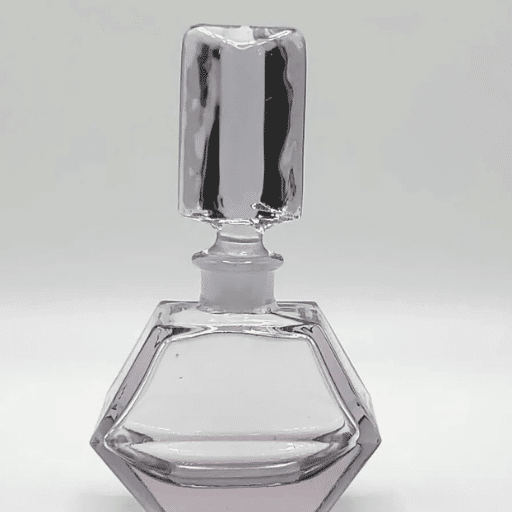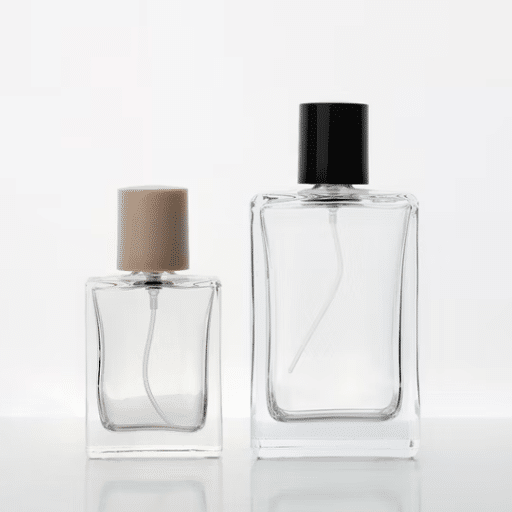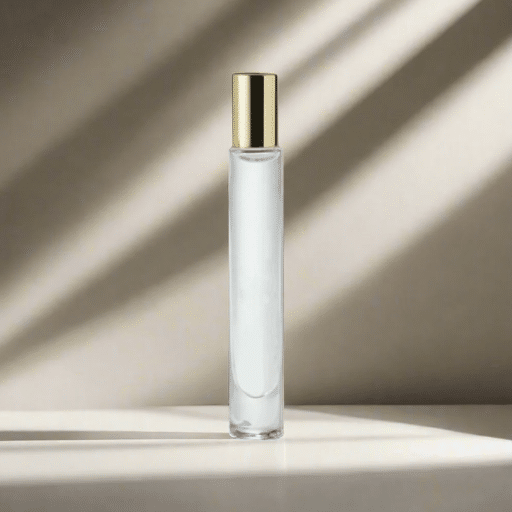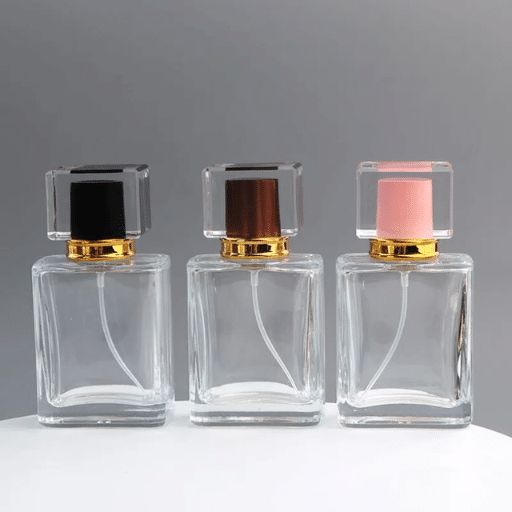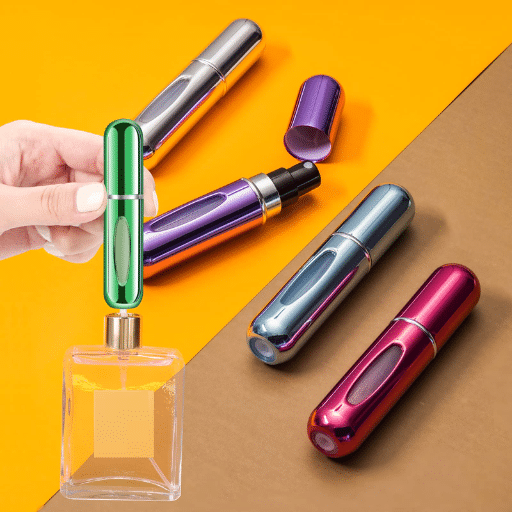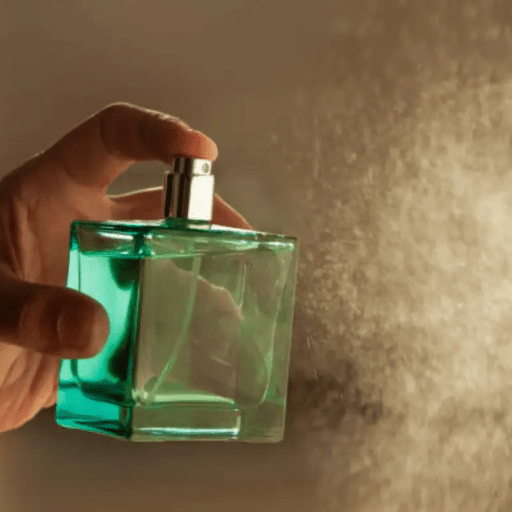Purchasing wholesale perfume bottles is a critical step for businesses in the fragrance, cosmetics, and personal care industries. This guide is designed to provide a comprehensive framework for understanding how to select the right bottles that meet both functional and aesthetic requirements. From material considerations to supplier selection, and cost-effectiveness to design preferences, we will cover the essential factors that contribute to a successful purchase. Whether you are launching a new product line or streamlining your packaging strategy, this article will equip you with the technical knowledge and actionable insights needed to make informed decisions.
What Are the Benefits of Buying Perfume Bottles Wholesale?
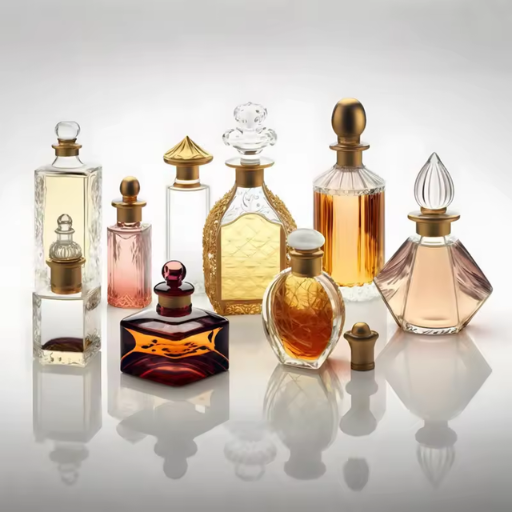
1.Cost Savings
Purchasing perfume bottles wholesale significantly reduces per-unit costs, allowing businesses to maximize their profit margins. Bulk buying eliminates the added expenses of smaller, repeated purchases and minimizes shipping fees.
2.Consistency in Quality
When sourcing wholesale, manufacturers often provide uniform quality across all units. This ensures that your product packaging maintains a consistent appearance, reinforcing your brand’s image and reliability.
3.Customization Options
Many wholesale suppliers offer customization services for bulk orders, such as logo printing, unique shapes, or specialized designs. This is advantageous for creating distinctive, branded packaging that stands out in the market.
4.Supply Chain Efficiency
By procuring larger quantities in a single transaction, businesses can streamline their supply chain operations, reduce the risk of stockouts, and maintain steady production schedules.
5.Scalability
Buying wholesale supports scalability by allowing businesses to prepare for growth without concerns about fluctuating bottle availability or costs. This is especially important for brands aiming to expand into new markets or launch larger campaigns.
Cost Savings with Wholesale Perfume Bottles
Purchasing wholesale perfume bottles delivers significant cost advantages for businesses by minimizing the per-unit price, thereby reducing overall production costs. Suppliers often provide bulk discounts, which enable businesses to achieve lower costs compared to buying smaller quantities. Wholesale procurement also eliminates frequent transactions and shipping expenses, leading to additional savings over time. Furthermore, stabilizing bottle prices through wholesale purchasing allows companies to maintain predictable budget planning and profit margins, especially important in competitive markets. These cost efficiencies directly contribute to better resource allocation and increased profitability for businesses scaling their operations.
Variety and Customization of Perfume Bottles
When it comes to the variety and customization of perfume bottles, the options are nearly limitless. Perfume bottles are available in an extensive range of shapes, sizes, and materials to suit diverse branding requirements and aesthetic preferences. Through customization, we can incorporate intricate designs, unique finishes like frosted glass or metallic coatings, and detailing that reflects a brand’s identity. Advanced printing techniques, such as silk screening or embossing, allow us to add logos, text, or patterns, ensuring a fully personalized product. Furthermore, functional customization options, such as spray mechanisms or rollerball applications, enhance user convenience, providing a tailored experience for customers.
Ensuring Quality in Wholesale Purchases
Ensuring quality in wholesale purchases involves several critical steps to minimize risks and improve product reliability. First, conduct thorough supplier evaluations by reviewing certifications, customer reviews, and performance history to confirm their credibility and compliance with industry standards. Request product samples to assess material quality, design accuracy, and functionality before committing to bulk orders. Additionally, establish clear quality control protocols, including inspection criteria and testing procedures, to ensure consistency across production runs. Working with manufacturers that provide transparent communication, detailed contracts, and after-sales support further enhances the reliability of wholesale transactions. Implementing these measures helps secure a balance of quality, efficiency, and cost-effectiveness in the procurement process.
How to Choose the Right Perfume Bottle Supplier?
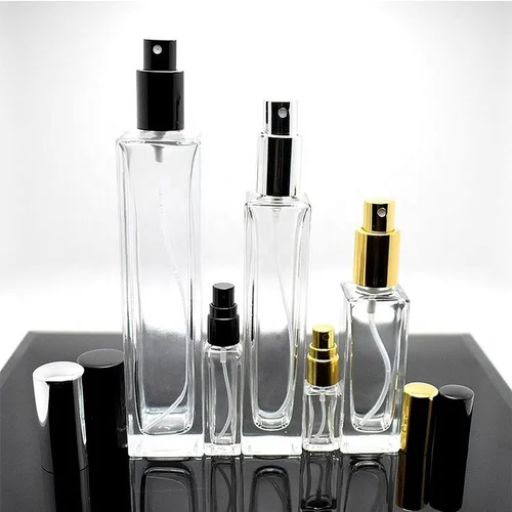
When choosing the right perfume bottle supplier, evaluate their production capabilities to ensure they can meet your volume requirements without compromising on quality. Assess the range and versatility of their designs, as well as their ability to accommodate customizations to align with your brand identity. Verify the supplier’s compliance with industry standards and certifications to guarantee product safety and quality. Additionally, review their lead times, minimum order quantities, and logistical support to ensure alignment with your business needs. Finally, prioritize suppliers with a proven track record, positive client reviews, and robust communication for seamless collaboration.
Identifying Reliable Perfume Bottle Manufacturers
Key Criteria for Selecting Reliable Perfume Bottle Manufacturers
When choosing a reliable perfume bottle manufacturer, it is essential to evaluate key factors to ensure your selection aligns with quality standards and business requirements:
- Product Quality and Material Options
Assess the manufacturer’s expertise in offering high-quality materials, such as glass, plastic, or metal, depending on your packaging needs. Look for options that support durability, luxury design, or sustainability, and always request samples to verify product quality firsthand.
- Customization Capabilities
A reliable manufacturer should provide design flexibility, allowing for custom shapes, sizes, finishes, and branding features like embossing or screen printing. This ensures that your packaging aligns with your brand’s unique identity and market demands.
- Certifications and Compliance
Inspect the company’s certifications, such as ISO standards, and their adherence to safety and environmental regulations. This guarantees your products meet industry norms and reinforces consumer trust.
- Order Scalability and Lead Times
Evaluate the manufacturer’s minimum order quantities and their ability to scale production as your business grows. Additionally, confirm their lead times for delivery to avoid supply chain disruptions.
- Client Feedback and Industry Reputation
Research reviews and testimonials from other brands to gauge the manufacturer’s reliability and customer satisfaction. A strong industry reputation often indicates consistency and professionalism in their services.
- Global Logistics Support
An ideal partner should have established networks to facilitate smooth international shipping, reducing delays and ensuring your products reach their intended markets efficiently.
By considering these factors, businesses can effectively identify manufacturers that not only meet their technical requirements but also contribute positively to their overall brand positioning.
Evaluating Supplier Credentials
Evaluating supplier credentials requires a systematic approach that ensures trustworthiness and alignment with business goals. First, I review their certifications and compliance with industry standards to verify quality and regulatory adherence. Second, I assess their financial stability and capacity, ensuring they can reliably meet production demands. Finally, I examine customer reviews and case studies to gain insights into their reputation and track record. This process helps me confidently partner with suppliers capable of supporting my operational objectives effectively.
Understanding Wholesale Glass Perfume Bottles Options
Key Considerations for Wholesale Glass Perfume Bottles Options
When evaluating wholesale glass perfume bottles, the following questions and corresponding technical parameters should guide your assessment:
- What materials and manufacturing standards are used?
Glass for perfume bottles should comply with industry standards such as ISO 15378 for primary packaging materials. Ensure the glass is non-reactive, lead-free, and meets quality certifications for purity and durability.
- Are the bottles customizable to align with branding needs?
Verify customization options, including shape, size, color, and finishes (e.g., frosted, transparent, or painted). Assess the capability for precise logo engraving, embossing, or screen printing with design tolerances of ±0.1mm.
- What are the bottle capacities available?
Common capacities range from 5 mL to 100 mL, accommodating diverse product types. Some suppliers may also offer unique sizes tailored to specific needs.
- What types of closures or accessories are compatible?
Consider screw caps, crimp pumps, or dropper closures. Review the compatibility with the bottle neck size, which typically ranges between 13-24 mm in diameter.
- Does the supplier offer sustainable options?
Assess the availability of eco-friendly glass, which can include recycled materials or lightweight glass to reduce environmental impact.
- What is the quality assurance process?
Confirm whether the supplier conducts tests for tensile strength, thermal shock resistance, and leakage, ensuring the bottles meet rigorous packaging demands.
By addressing these key parameters, you can confidently choose wholesale glass perfume bottles that meet both technical and aesthetic requirements efficiently.
What Types of Glass Bottles are Available for Perfumes?
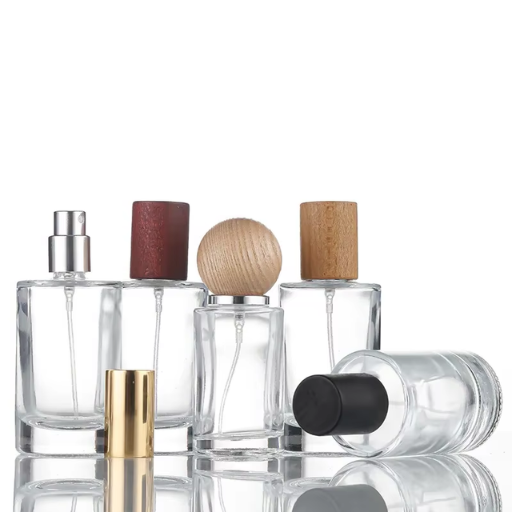
Types of Glass Bottles for Perfumes
Glass perfume bottles come in a variety of types and designs, tailored to different functional and aesthetic needs. Key types include:
- Standard Cylindrical Bottles – These are versatile and commonly used for both men’s and women’s fragrances, offering a classic design that suits most brands.
- Rectangular Bottles – Preferred for their modern aesthetics and compact design, ideal for high-end brands targeting a sleek and professional look.
- Round or Curved Bottles – These exude elegance and are often used to convey luxury or femininity, popular for floral or softer scents.
- Unique Shapes – Custom-designed bottles can highlight brand identity and creativity, ranging from abstract forms to thematic shapes like flowers or spheres.
- Travel-Size Bottles – Small, portable bottles designed for convenience and on-the-go use, often featuring secure, leak-proof caps.
Each type can be further customized in terms of color, finish (e.g., matte or glossy), and decorative elements to align with the product’s branding and market positioning.
Exploring Clear Glass vs. Colored Glass Options
When considering clear glass versus colored glass for packaging, there are several critical factors to evaluate based on functionality, aesthetics, and technical characteristics:
1. Light Protection
- Clear Glass: Provides minimal protection against UV light, making it less suitable for light-sensitive products, such as certain oils, serums, or beverages prone to degradation with prolonged exposure.
- Colored Glass: Offers enhanced UV protection, especially amber and cobalt blue, which are commonly used for products requiring higher light shielding.
2. Aesthetic Appeal
- Clear Glass: Highlights the product inside, appealing for items where visual clarity is integral, such as transparent liquids or visually striking contents. It exudes a clean, premium look.
- Colored Glass: Adds an additional layer of branding and marketing value. It can evoke specific emotions or themes, e.g., green glass for eco-friendly products.
3. Durability and Compatibility
- Both clear and colored glass share similar mechanical properties (e.g., high chemical resistance and structural integrity). However, manufacturers should ensure the glass composition adheres to standards relevant to the intended use (e.g., food-grade or pharmaceutical-grade).
4. Cost Considerations
- Clear Glass: Typically more economical in production and widely accessible, making it a cost-effective choice.
- Colored Glass: Slightly more expensive due to the inclusion of metal oxides or other additives during the manufacturing process. However, this added cost can translate into improved product preservation.
By thoroughly analyzing these aspects, clear and colored glass can be matched to specific branding, functional, and technical requirements to ensure optimal performance and customer satisfaction.
Choosing Between Spray Bottle and Dropper Designs
When deciding between a spray bottle and a dropper design, I focus on the intended use of the product and the consumer’s convenience. Spray bottles are ideal for applications requiring even distribution, such as cleaning solutions or cosmetic mists, thanks to their ease of use and wider coverage. Droppers, by contrast, offer precision and control, making them better suited for products like serums or essential oils that require measured application. Additionally, I consider factors like viscosity, as thinner liquids are more compatible with sprays, while droppers are effective for thicker substances. Taking these factors into account ensures the chosen design aligns with both functionality and user preferences.
Benefits of Refillable Glass Perfume Bottles
Refillable glass perfume bottles offer several benefits, both practical and environmental, catering to the needs of both consumers and manufacturers. Firstly, they contribute to sustainability by reducing single-use plastic waste and encouraging the reuse of durable materials. Glass is chemically inert and non-porous, ensuring that the fragrance’s composition remains unaffected over time, preserving its quality and longevity. Additionally, these bottles are versatile and compatible with various dispensing mechanisms, such as sprays or droppers, depending on user requirements.
From a technical perspective, refillable glass bottles should meet certain parameters for optimal functionality. For instance:
- Material Thickness: A minimum wall thickness of 2-3mm ensures durability and resistance to breakage under regular handling.
- Capacity Range: Typical capacities could vary between 10-100ml, with smaller sizes suitable for portability and larger sizes for bulk use.
- Neck Diameter Compatibility: Standardized neck sizes, such as DIN 18 or DIN 20, ensure compatibility with most dispensing closures.
- Weight: Lightweight designs around 50-200g (depending on capacity) can balance durability with user convenience.
By combining these technical specifications with aesthetic designs, refillable glass perfume bottles achieve a blend of functionality, sustainability, and consumer appeal.
Why Consider Fine Mist Sprayers for Your Brand?
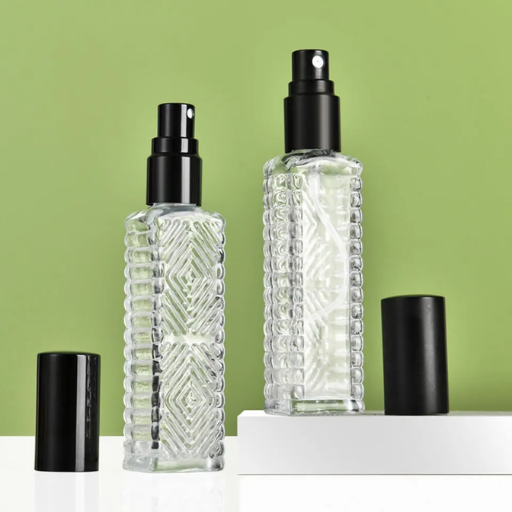
Fine mist sprayers offer precise and even product distribution, making them ideal for fragrances, skincare, and other liquid formulations. Their controlled application minimizes waste and enhances user satisfaction, creating a premium experience for consumers. Additionally, they are available in various materials and designs, allowing for customization that aligns with your brand identity. The use of fine mist sprayers also supports hygiene by reducing product contamination, and their compatibility with refillable bottles aligns with sustainable packaging trends.
Enhancing User Experience with Fine Mist
Fine mist sprayers are engineered to optimize consumer interaction with liquid-based products. They employ advanced nozzle technology to produce an evenly distributed spray pattern, ensuring precision and efficiency in product application. This mechanism not only reduces product wastage but also delivers a consistent dosing effect, which is critical for industries like cosmetics, pharmaceuticals, and household cleaning.
The versatility of fine mist sprayers lies in their customizable output levels and ergonomic designs, which cater to varying user preferences and product needs. By incorporating durable materials and tamper-evident features, they elevate consumer trust in product integrity. Furthermore, their eco-conscious design satisfies growing demand for sustainable packaging, as many models are refillable and compatible with recyclable components, aligning with global environmental initiatives.
Design Options for Perfume Spray Bottles
Design options for perfume spray bottles encompass a broad spectrum of materials, mechanisms, and aesthetics tailored to both functionality and brand identity. Common material choices include glass, acrylic, and metal alloys, each offering distinct benefits in durability, weight, and visual appeal. Glass remains the most popular option due to its premium appearance and compatibility with a wide range of fragrances, though metal and acrylic are often used for lightweight or travel-friendly designs.
Mechanism variations, such as fine mist sprayers or controlled dose valves, cater to user experience preferences and ensure precise application and minimal waste. Ergonomics plays a significant role, with bottles featuring contoured shapes, non-slip finishes, or custom-sized actuators to enhance usability. Screw-top or refillable options are increasingly in demand for sustainability-conscious consumers, allowing for extended use while reducing packaging waste.
Aesthetic design trends emphasize personalization and luxury, incorporating custom engravings, bold color palettes, and unique shapes to evoke brand differentiation. Transparent or frosted finishes, minimalistic silhouettes, and metallic accents further augment the bottle’s visual allure, capturing consumer attention in competitive markets. These factors collectively ensure that perfume spray bottles are designed to harmonize practicality with visual sophistication.
Impact on Brand Perception
The design of a perfume spray bottle significantly influences brand perception, acting as a powerful tool for differentiation and consumer engagement. Aesthetic elements such as material quality, finish, and decorative details contribute to the perception of luxury and exclusivity. For instance, high-quality glass or sustainable materials directly correlate with a premium brand image, while distinct shapes and bold color choices emphasize innovation and creativity.
Key Technical Parameters Influencing Brand Perception:
1. Material Composition:
-
- Premium options: High-grade glass, metal.
- Eco-friendly alternatives: Recycled plastics, biodegradable polymers.
- Finish Specifications:
- Transparent or frosted finishes at 95%-98% clarity.
- Metallic accents with vacuum plating for durability and shine retention.
- Spray Mechanism:
- Nozzle pressure between 2.5 – 3.0 psi for consistent mist dispersion.
- Leak-proof sealing to ensure product integrity.
- Design Customizations:
- Custom engravings with precision tolerances under ±0.1 mm.
- Color palettes adhering to Pantone Matching System (PMS) for brand uniformity.
Through careful consideration of these parameters, brands can create bottles that not only serve as functional containers but also as strategic assets that reinforce visual identity and brand values.
How to Incorporate Essential Oils in Perfume Bottles?
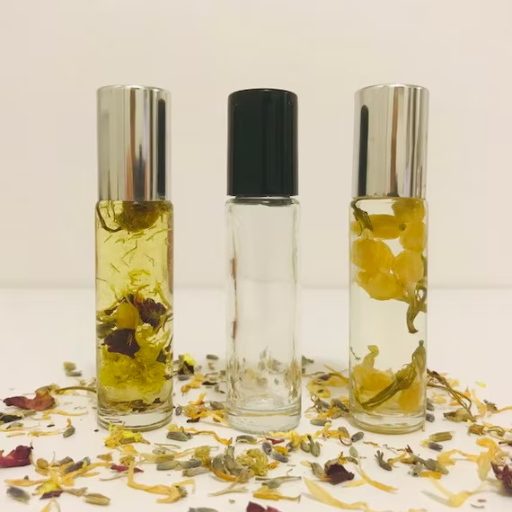
Selecting and Incorporating Essential Oils in Perfume Bottles
To effectively incorporate essential oils into perfume bottles, it is crucial to follow a structured approach that ensures optimal performance and longevity of the fragrance:
- Choose High-Quality Essential Oils: Select pure, therapeutic-grade essential oils to achieve a refined and lasting fragrance. Avoid synthetic substitutes that may alter the composition or degrade over time.
- Dilution and Blending: Essential oils should be blended with carrier oils or alcohol bases at appropriate ratios to enhance solubility and prevent over-concentration, which could compromise safety or bottle integrity.
- Test for Compatibility: Ensure the essential oils are chemically compatible with the bottle material. Glass bottles, particularly amber or cobalt varieties, are recommended to prevent degradation caused by UV exposure.
- Filling Process: A filling operation must make use of high accuracy tools to fill containers with the product without spilling or contaminating it. Also, check the atomizers and screw caps to ensure that the product is not spoiled.
- Storage Conditions: After adding content, keep the bottle in a dark cool place in order to maintain its aromatic characteristics and increase its lifetime.
Following the steps outlined here enables companies to make good-grade perfumes that depict the peculiar beauty of essential oils over time without losing appeal, quality, or beauty.
Blending Essential Oils with Perfume
When blending essential oils with perfume, I follow a structured approach to ensure the best results. First, I prioritize understanding the unique properties of each essential oil, such as volatility and aroma intensity, to achieve a balanced composition. I select oils that complement the base, middle, and top notes of the perfume and test ratios systematically through small batches to refine the blend. Additionally, I ensure precise measurements using pipettes or droppers to maintain consistency. After blending, I allow the mixture to rest for at least 48 hours to enable the notes to harmonize and the scent profile to stabilize. Lastly, I always evaluate the final product on test strips or skin to verify its projection, longevity, and overall balance before proceeding to scale production.
Packaging Essential Oils in Vials
Packaging essential oils requires meticulous attention to detail to ensure product integrity, longevity, and safety. Essential oils should be stored in dark amber or cobalt blue glass vials to protect against UV light, which can degrade the oils over time. These vials need to be airtight, utilizing high-quality, tamper-proof caps such as dropper tops or euro droppers that facilitate controlled dispensing while preventing contamination.
It is essential to sterilize the containers properly before use to eliminate the risk of introducing impurities. Using pipettes or syringes for transferring oils minimizes spillage and maintains precision in volume. Labeling should include the oil’s name, botanical origin, batch number, and any safety precautions to comply with regulatory standards. Additionally, storage conditions should be cool, dry, and shielded from direct sunlight to preserve the oils’ chemical integrity. Following these protocols ensures that the essential oils retain their therapeutic properties and appeal over time.
Marketing Strategies for Natural Fragrances
To effectively market natural fragrances, a strategic approach must focus on establishing trust, creating emotional connections, and emphasizing the sustainability angle. Below are concise, actionable strategies derived from current industry insights:
- Highlight Sustainability and Transparency
Consumers are increasingly drawn to brands that prioritize eco-friendly practices and ethical sourcing. Ensure that marketing materials prominently feature details about sustainable harvesting, cruelty-free testing, and biodegradable packaging. Certifications such as USDA Organic, Fair Trade, or ISO 9235 (for natural aromatic raw materials) can authenticate your brand’s commitment to quality and environmental responsibility.
- Leverage Storytelling and Emotional Engagement
Craft a compelling narrative around the origin and inspiration of your natural fragrances. Share stories of the production process, including the botanical origins and the artisans involved. Emotional branding can foster a deeper connection with consumers, turning them into loyal advocates for your products.
- Focus on Targeted Digital Marketing
Utilize data-driven strategies for online advertising, such as pay-per-click (PPC) campaigns and social media marketing. Segment your audience to tailor messaging for different demographics, such as eco-conscious millennials or luxury fragrance enthusiasts. Collaborate with influencers in the natural beauty industry to enhance reach and credibility.
- Accurate Product Positioning through Technical Claims
Provide detailed descriptions of the fragrances, including olfactory profiles (e.g., top, middle, and base notes) and technical parameters, such as essential oil concentrations and percentages of natural ingredients. For example:
– Essential oil concentration: 10-20% for Eau de Parfum (EDP), up to 30% for luxury parfums.
– Natural ingredient content: 95-100% for organic certifications.
This transparency aids in clearly defining the product’s value and market positioning.
- Educate Consumers on Benefits and Usage
Create educational content, such as blogs, videos, and guides, to demonstrate the benefits and longevity of natural fragrances compared to synthetic ones. Address common concerns like variability in scent due to natural ingredients, boosting confidence in product consistency.
- Participate in Green and Wellness Expos
Showcase your products at wellness, green living, or organic trade shows, where you can connect directly with a niche audience. Offering samples and interactive fragrance experiences can leave lasting impressions.
By implementing these strategies and maintaining a strong emphasis on quality and authenticity, brands can effectively capture and retain the trust of the natural fragrance market.
Reference Sources
-
Packamor: Wholesale Perfume Bottles & Packaging – Offers premium perfume bottles in bulk with custom branding options.
-
Global Sources: Perfume Bottles – A trusted platform for sourcing and buying wholesale perfume bottles.
-
Roetell: A Guide to Choosing the Perfect Perfume Bottles – Provides insights into the advantages of buying wholesale perfume bottles and customization options.
-
Reddit: Where to Buy Perfume Bottles – A community discussion on sourcing affordable perfume bottles, including platforms like Alibaba.
-
Daxin Glass Bottles: Perfume Packaging Wholesale Guide – Highlights key considerations when sourcing wholesale perfume bottles, such as material and design.
Frequently Asked Questions (FAQs)
Q: What are the benefits of buying empty perfume bottles wholesale?
A: Purchasing empty perfume bottles wholesale allows you to save money by buying in bulk. It also provides a wide variety of options for styles and sizes, such as 50ml and 100ml bottles, which can be customized to suit your brand’s needs.
Q: How can I ensure the quality of glass spray bottles for my business?
A: To ensure quality, look for suppliers that offer high-grade materials like clear glass or frosted glass. Check for features such as fine mist spray and durable construction to ensure the longevity and functionality of the fragrance bottles.
Q: What sizes are most commonly available in glass perfume bottles wholesale?
A: The most commonly available sizes in glass perfume bottles wholesale include 50ml, 100ml, and mini perfume bottles. These sizes cater to a range of consumer preferences and usage needs.
Q: Are there eco-friendly options for clear glass perfume bottles?
A: Yes, many suppliers offer eco-friendly options such as recycled glass or refillable bottles. Choosing clear refillable glass bottles can also reduce waste and appeal to environmentally conscious consumers.
Q: What should I consider when choosing a perfume atomizer?
A: When choosing a perfume atomizer, consider the spray quality, such as whether it provides a fine mist spray. The design and size, like mini perfume bottles for travel, should also align with your brand’s aesthetic and functionality requirements.
Q: How can I customize perfume glass bottles for my brand?
A: Customization options for perfume glass bottles include choosing different shapes, sizes, and colors, such as clear glass or frosted options. Additionally, you can add logos or unique designs to the bottles to enhance brand recognition.
Q: What are some popular styles of cologne bottles available for wholesale?
A: Popular styles of cologne bottles available for wholesale include classic clear glass bottles, sleek modern designs, and options with black caps for a sophisticated look. These styles cater to a variety of consumer tastes and brand identities.
Q: Can I find glass spray bottles suitable for essential oils?
A: Yes, many glass spray bottles are designed to be suitable for both perfumes and essential oils. Look for bottles with secure seals and spray mechanisms that can handle thicker oils without clogging.
Q: What packaging solutions are ideal for mini perfume bottles?
A: Ideal packaging solutions for mini perfume bottles include compact, durable materials like clear glass or frosted glass, which protect the contents while allowing for easy transport. Packaging should also align with the brand’s image and functionality needs.

